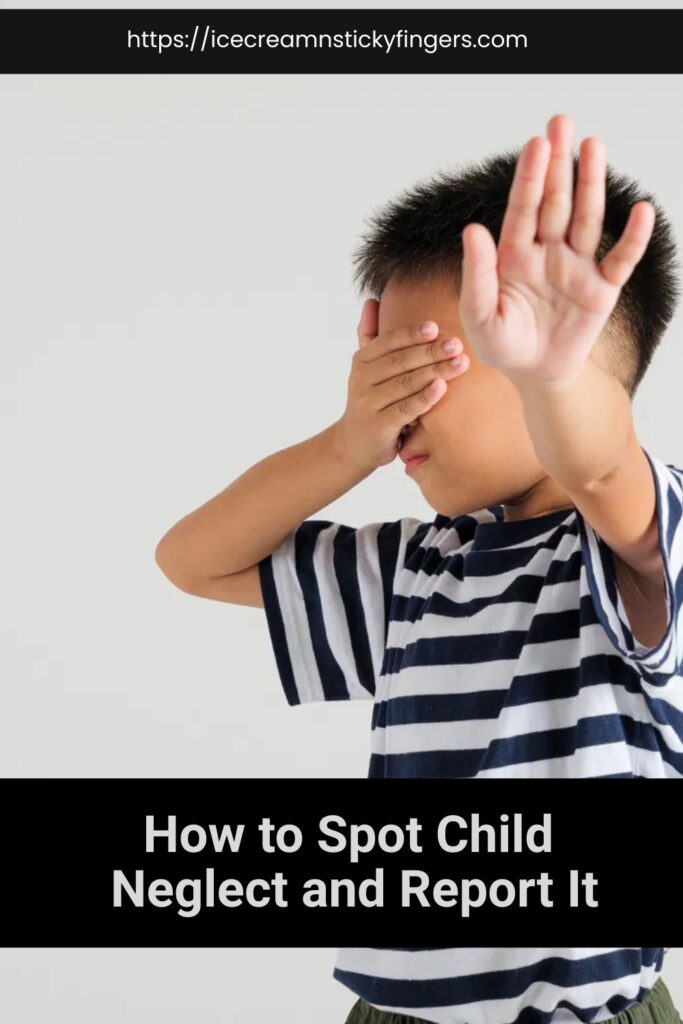How to spot child neglect and report it immediately if you feel a child is in potential danger. If you are a TikTok fan, many of you probably see Nurse Hannah in your feed. She has posted countless videos of neglect and wrongdoings to her children. Some of those things include leaving 17 diapers around the house, not changing pee diapers, her son flinches when her husband tries to hand him something, refusing to give him food, and so much more. Do you know someone who is possibly neglecting their kids? Please continue reading to learn how to spot child neglect and report it.

Understanding Child Neglect
Child neglect is a form of child abuse that occurs when a caregiver fails to provide the necessary care, supervision, affection, and support needed for a child’s well-being. It can have long-term effects on a child’s physical and emotional health. Recognizing the signs of neglect and knowing how to report it is crucial for protecting vulnerable children.
Signs of Child Neglect
- Physical Indicators:
- Poor hygiene (dirty clothes, body odor, untreated illnesses)
- Malnourishment (underweight, constant hunger, begging for food)
- Inappropriate clothing for the weather
- Untreated medical issues (dental problems, untreated injuries)
- Behavioral Indicators:
- Frequent absences from school
- Consistent fatigue or falling asleep in class
- Stealing or hoarding food
- Lack of adult supervision, playing unsafely
- Emotional and Developmental Indicators:
- Delayed physical or emotional development
- Extreme behaviors (overly compliant, passive, or aggressive)
- Lack of emotional attachment to caregivers
- Withdrawal from social interactions
- Environmental Indicators:
- Living in an unsafe or unsanitary environment
- Home lacking basic necessities (food, water, heat)
- Caregiver’s substance abuse or mental health issues
Reporting Child Neglect
- Document Your Observations:
- Take notes of the signs you’ve observed, including dates, times, and specific examples.
- Note any conversations you’ve had with the child or caregiver that raised concerns.
- Understand Reporting Requirements:
- In many places, certain professionals (teachers, doctors, social workers) are mandated reporters, legally required to report suspected neglect.
- Even if you’re not a mandated reporter, you can still make a report if you suspect neglect.
- Contact the Appropriate Authorities:
- Child Protective Services (CPS): Each state or region typically has a CPS agency that handles reports of neglect and abuse.
- Police: If the child is in immediate danger, contact law enforcement.
- Hotlines: Many regions have hotlines for reporting child abuse and neglect. In the U.S., you can call the National Child Abuse Hotline at 1-800-4-A-CHILD (1-800-422-4453).
- Provide Detailed Information:
- When making a report, be ready to provide the child’s name, age, address, and details about the neglect.
- Share your relationship to the child and any other relevant information.
- Reports can often be made anonymously, but providing your contact information can be helpful for follow-up.
- Follow Up:
- If you have ongoing concerns, follow up with CPS or the agency you reported to.
- Continue to document any additional signs of neglect.

Supporting the Child
- Offer Emotional Support:
- Be a stable and supportive presence in the child’s life.
- Listen to them without judgment and provide reassurance.
- Connect with Resources:
- Help the child and their family connect with local resources like food banks, counseling services, and shelters.
- Advocate for the Child:
- Work with school officials or community organizations to ensure the child’s needs are being met.
Recognizing and reporting child neglect is a critical step in ensuring the safety and well-being of vulnerable children. You can make a significant difference in a child’s life by staying vigilant and taking action.







